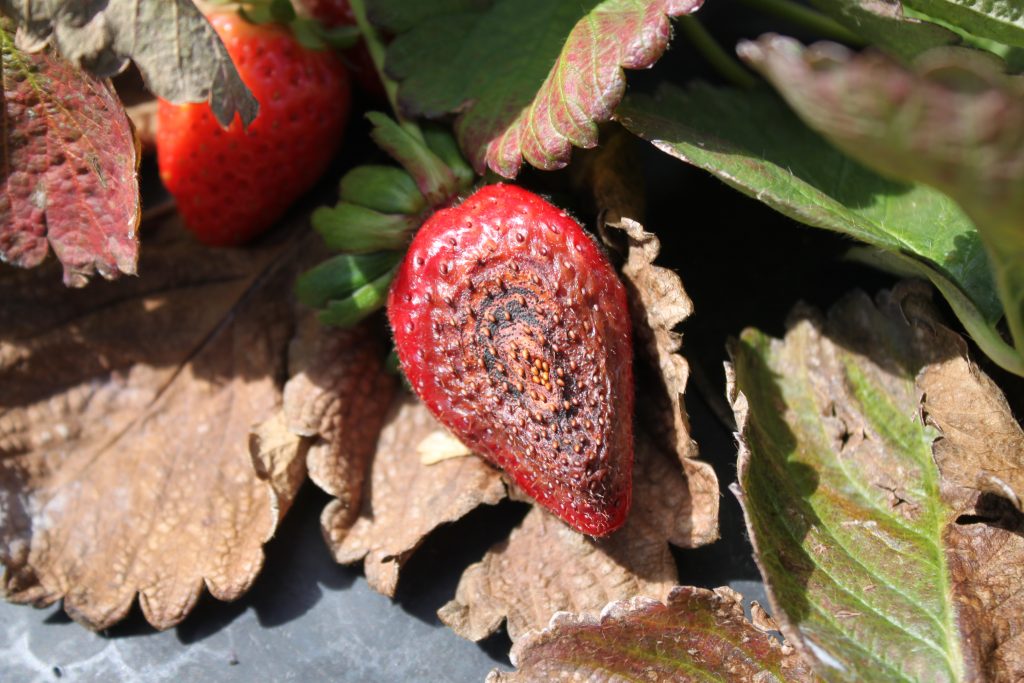
Neopestalotiopsis Fruit Rot has emerged as a significant disease of Florida strawberry production. Instances have increased over the last three years, to the point this year the disease was discovered in fields that had it the prior season.
But what can producers do to manage this destructive disease? Natalia Peres, a Professor of Plant Pathology at the University of Florida/IFAS Gulf Coast Research and Education Center, offered a few suggestions during the Gulf Coast Research and Education Center Field Day, to growers who are struggling with the disease year after year.
“Avoid harvesting and moving equipment through the fields when the plants are wet. That’s one of the ways the pathogen can move in the fields. I realize it is much easier to do early in the season when you don’t have a lot of fruit than once we get into the peak, which is coming soon,” Peres said.
Other Suggestions
Peres also advises producers to rotate fungicides that are found to be effective during periods of favorable conditions. Farmers also need to start planning strategies for crop inoculum termination and removal.
“I do suspect that a lot of the inoculum is surviving in the crop residue that we are incorporating in our fields,” Peres said.
Producers also have a better chance to manage the disease if they start with clean transplants.
“We do need to continue to work with our nurseries so the ones that don’t have it can stay clean,” Peres said.
Disease Instances Increasing
The disease was first discovered during the 2018-19 season in five farms and was attributed to one nursery source in North Carolina. More than 20 farms experienced the disease during the 2019-20 season, and the disease was attributed to two nursery sources early in the season in North Carolina and Canada. More than 20 farms had the disease this year.
Disease Symptoms
Neopestalotiopsis causes leaf spots on strawberry plants. It develops quickly and produces spores on the leaves. It can cause severe leaf spotting and fruit rot under favorable weather conditions.
Unfortunately, it can be hard to detect because of other similar leaf spot diseases that growers must contend with like leaf scorch, leaf blotch and Cercospora leaf spot.









